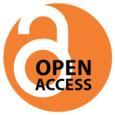Frequency of Osteopenia and its association with dietary factors among female population aged 18-60 years
Osteopenia and its association with dietary factors
DOI:
https://doi.org/10.54393/df.v1i02.2Keywords:
Key words: Osteopenia, Dietary habits, Bone Mineral DensityAbstract
Osteopenia is regarded as a bone condition whereby its is observed that the Bone Mineral Density (BMD) is less than that of the mean value. however, it is not as low as Osteoporosis. Unfortunately Pakistan has become one of those countries which encounter the issues of Osteoporosis and Osteopenia among women which may or may not be influenced by dietary factors. Objectives: The objective of this study was to find the frequency of osteopenia among females and its relationship with dietary factors. Methods: It was an analytical and cross-sectional study. the research was carried out at Niaz Medicure Clinic in Faisalabad. The study was completed in 9 months from 18 October 2019 to 18 July 2020. Selection of the participants was based on Non probability purposive sampling. 323 females were taken for the study. The Bone Mineral Density was measured using Quantitative Ultrasound (QUS) machine. The factor dietary habits was taken into account for the study. Results: The results showed that about 56% of the females had Osteopenia. However, Dietary factors didn’t seem to influence BMD levels in this study (p<0.05). Conclusion: There was no association found between Osteopenia and Dietary factors including milk intake (p =0.603) and junk food (0.159).
References
World Health Organization. Assessment of fracture risk and its application to screening for postmenopausal osteoporosis. Geneva: World Health Organization; 1994. Osteoporos Int. 843.4(6):368-81. doi: 10.1007/BF01622200
Karaguzel G, Holick MF. Diagnosis and treatment of osteopenia. Reviews in endocrine and metabolic disorders. 2010 Dec 1;11(4):237-51. doi: 10.1007/s11154-010-9154-0
Entezari V, Lazarus M. Surgical Considerations in Managing Osteoporosis, Osteopenia, and Vitamin D Deficiency During Arthroscopic Rotator Cuff Repair. Orthop. Clin. 2019 Apr 1;50(2):233-43. doi: 10.1016/j.ocl.2018.10.006
Chaudhary B. Vitamin D Deficiency in Rawalpindi–Islamabad Region. J. Rawalpindi Med. Coll. 2017 Jun 30 ; 21 (2): 169-72. https://www.semanticscholar.org/paper/Vitamin-D-Deficiency-in-Rawalpindi-%E2%80%93Islamabad-Chaudhary-Afzal/fba10b74069cac391bfe91fec63d468d8bf5e559
Bouillon R, Marcocci C, Carmeliet G, Bikle D, White JH, Dawson-Hughes B et.al Skeletal and extraskeletal actions of vitamin D: Current evidence and outstanding questions. Endoc. Rev. 2018 Oct 12;40(4):1109-51. doi: 10.1210/er.2018-00126
Nair R, Maseeh A. Vitamin D: The “sunshine” vitamin. J. pharma. Pharmacother. 2012 Apr;3(2):118. doi: 10.4103/0976-500X.95506
Wacker M, Holick M. Vitamin D—effects on skeletal and extraskeletal health and the need for supplementation. Nutrients. 2013 Jan 10;5(1):111-48. doi: 10.3390/nu5010111
Mithal A, Bansal B, Kyer CS, Ebeling P. The Asia-pacific regional audit-epidemiology, costs, and burden of osteoporosis in India 2013: a report of international osteoporosis foundation. Ind. J. endocr. Metab. 2014 Jul;18(4):449. doi: 10.4103/2230-8210.137485
Khadilkar AV, Mandlik RM. Epidemiology and treatment of osteoporosis in women: an Indian perspective. Intl. j. wom. hlth. 2015;7:841. doi:10.2147/IJWH.S54623
Jaleel RI, Nasrullah FD, Khan AY. Osteopenia in the younger females. J. Surg. Pak. 2010 Jan;15:29-33. http://old.jsp.org.pk/Issues/JSP%2015(1)%20Jan%20March%202010/Riffat%20Jalil%20OA.pdf
Lowe, NM, Ellahi, B, Bano, Q, Bangash, SA, Mitra, SR & Zaman, M. Dietary calcium intake, vitamin D status, and bone health in postmenopausal women in rural Pakistan., J. Hlth. PopulNutr 2011. 29(465-470). doi: 10.3329/jhpn.v29i5.8900
Ersoy B, Kizilay DÖ, Yilmaz SK, Taneli F, Gümüşer G. BMD, vitamin D status, and calcium intake in healthy female university students from different socioeconomic groups in Turkey. Archi. Osteop. 2018 Dec 1;13(1):135. doi: 10.1007/s11657-018-0482-0
Srivastava M, Fatima GN, Srivastava R, Singh MM. Assessment of Awareness of Osteoporosis Amongst Unmarried Indian Girl Students Pursuing Undergraduate and Postgraduate Professional Courses. Asian J. Or. Hlth Alli. Sci. 2013;3(1):2.
Christakos S, Dhawan P, Porta A, Mady LJ, Seth T. Vitamin D and intestinal calcium absorption. Mole. Cell. Endoc. 2011 Dec 5;347(1-2):25-9. doi: 10.1016/j.mce.2011.05.038
Carmeliet G, Dermauw V, Bouillon R. Vitamin D signaling in calcium and bone homeostasis: a delicate balance. B. Prac. Res. Clin. Endoc. Metab. 2015 Aug 1;29(4):621-31. doi: 10.1016/j.beem.2015.06.001
Tai V, Leung W, Grey A, Reid IR, Bolland MJ. Calcium intake and BMD: systematic review and meta-analysis. Bmj. 2015 Sep 29;351:h4183. doi: 10.1136/bmj.h4183
National Nutrition Survey 2018. https://www.unicef.org/pakistan/reports/national-nutrition-survey-2018-key-findings-report. Accessed on 07.10.2020
Lim HS, Ji SI, Hwang H, et al. Relationship between Bone Density, Eating Habit, and Nutritional Intake in College Students. J. Bone Metab. 2018;25(3):181-186. doi:10.11005/jbm.2018.25.3.181
Downloads
Published
How to Cite
Issue
Section
License
Copyright (c) 2020 DIET FACTOR (Journal of Nutritional & Food Sciences)

This work is licensed under a Creative Commons Attribution 4.0 International License.
This is an open-access journal and all the published articles / items are distributed under the terms of the Creative Commons Attribution License, which permits unrestricted use, distribution, and reproduction in any medium, provided the original author and source are credited. For comments












